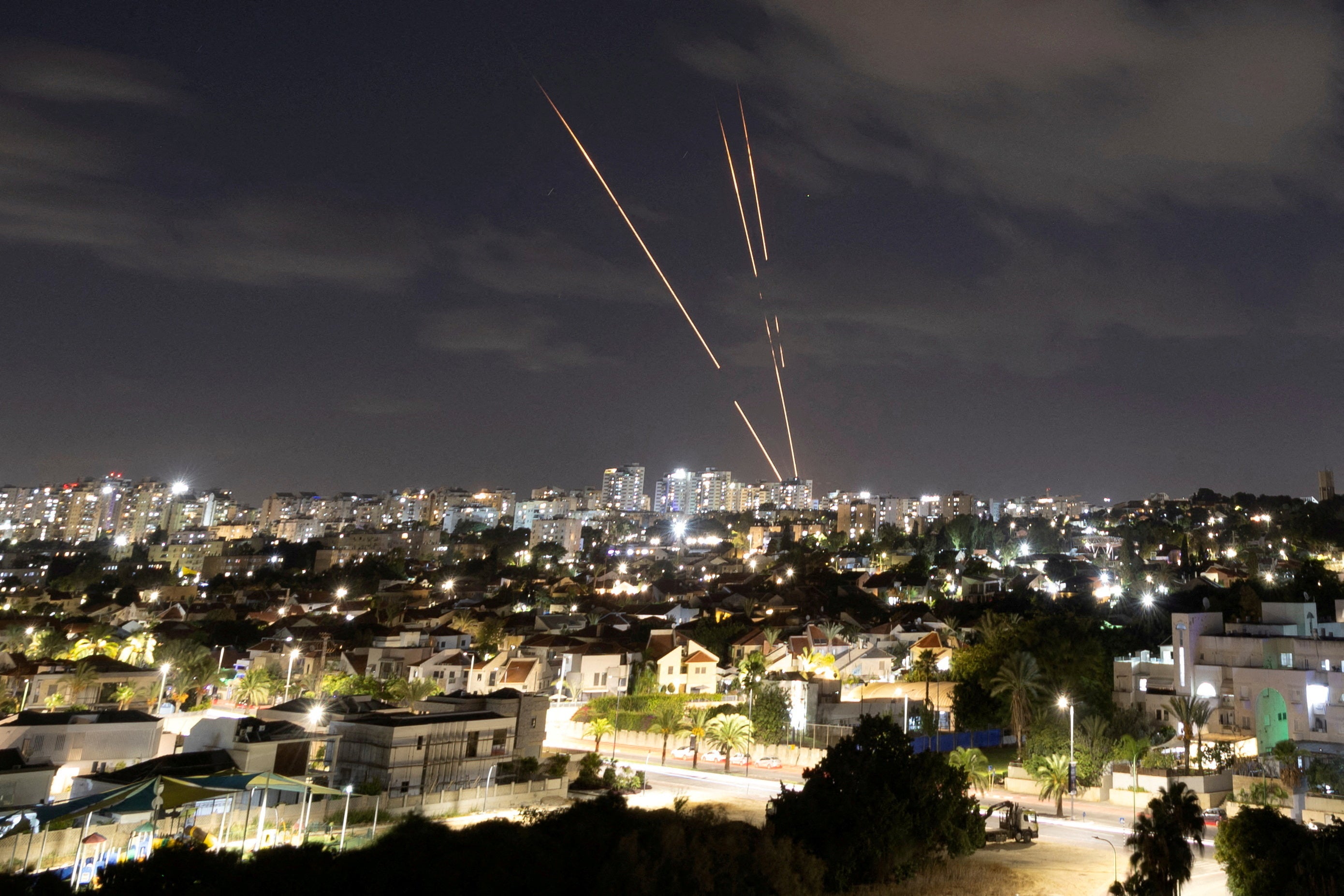Rockets, missiles and the Iron Dome: who calls the shots in the Middle East?
With the conflict having reached a new and extremely dangerous phase, former British army officer Mike Crofts weighs up the effectiveness of each side’s weaponry – and how they might use it next


Escalating retaliatory strikes signify the severity of the situation between Israel and Iran. Tuesday’s strike was more aggressive than the response in April by Iran to the Israeli strike on its consulate in Damascus, which killed Mohammad Zahedi, the IRGC commander of the Quds Force.
April’s attack consisted of 300 drones, which were largely neutralised by Israel’s Iron Dome, the joint US-Israeli aerial protection system that shoots down rockets. Tuesday night’s attack consisted of approximately 180 ballistic missiles delivering a more devastating payload, albeit countered in part by the Iron Dome.
Even Iran could not have anticipated the vehemence with which Israel would respond to the 7 October attacks. Israel’s latest switch to focus on the systematic dismantling of Hezbollah’s senior leadership in a single week has left Iran’s quest for regional hegemonic control in tatters. But whilst Hezbollah’s leadership is wounded, the force should not be underestimated.
Hezbollah, said to be the world’s most heavily armed non-state actor, is located in the predominantly Shia south of Lebanon, and has an armed force equivalent in size to the British army – approximately 100,000. This is amazing, given that Hezbollah is not the official Lebanese army. It is equipped with heavy tanks and weaponry estimated to include between 100,000 and 150,000 rockets, which have been inflicting damage on Israel since the day after the 7 October attacks.
Whilst the group’s weapons are not on a par with those of Israel, their volume is a concern. The armoury includes Iranian-made Raad, Fajr, and Zilzal rockets, as well as Russian-made Katyusha rockets. The sophistication of this technology is limited, but the sheer size of Hezbollah’s arsenal provides it with a psychological edge, as the uncertainty of the missiles’ destination causes panic among their potential targets. Hezbollah could fire 200 rockets a day, akin to Tuesday’s Iranian assault, and maintain that rate for roughly two years without resupply.
This arsenal, however, may amount to little given the effect that Israel’s recent campaign will have had. Defensive operations and armoured warfare are near impossible to coordinate without clear leadership and communication. Both have been undermined by Israel’s pager and walkie-talkie attacks, and their rocket strikes on Hezbollah’s leadership.
Despite Israel’s vociferous demands that Iran be prevented from becoming a nuclear power, Israel has an arsenal that is currently estimated by the Stockholm International Peace Research Institute to possess 90 plutonium weapons. Ayatollah Khamenei issued a fatwa banning Iran’s pursuit of WMDs in the 1990s, which was reissued in 2003 and 2005. The big gamble at the moment, however, is whether the current situation will accelerate Iran’s quest to equip itself with nuclear weapons.
Another issue for those who challenge Israel is the US policy practice of qualitative military edge (QME) in relation to Israeli military aid. This stipulates that Israel must be supplied with equipment capable of defeating all known regional threats. The Iron Dome and the Israeli air force demonstrate this principle. The UK has also committed to support Israel in countering ballistic missiles if required.
Air superiority plays a large role in the balance of ground warfare. Hezbollah has no equivalent to Israel’s air capabilities, and has been assessed to lack anti-aircraft weaponry. With Russia facing its own challenges in Ukraine, it is difficult to see Hezbollah being stocked with weaponry sophisticated enough to counter Israeli air power.
Israel’s spring resupply commitment of approximately $12.5bn (£9.6bn) from the USA is on top of the previous military support – in the region of $3.5bn per year – signed off by Obama in 2016. This support has equipped Israel with 50 F-35 fighter jets, which come in at just over $110m each, and 300 F-16s, providing air-to-ground attack capabilities – the largest fleet of F-16s outside the USA. Israel’s air superiority is unmatched by its regional competitors.
With air-to-air superiority established, Israel can deploy slower attack helicopters, which are effectively floating gunships, and the F-16 air-to-ground fleet, which are simultaneously able to target Hezbollah’s ground positions and armoured vehicles.
This disparity in armaments would force Hezbollah to fight in an irregular fashion – by guerilla tactics, in old money – which could inflict a heavy toll on Israeli ground forces if they retain a presence in Lebanon.
Operationally, some might compare Israel’s efforts to invade Lebanon with Russian aggression in Ukraine. Lebanon is a far smaller country – the logistical burden of a ground offensive over limited distance is less, and Israel has recent experience there. Israel would have to cross Iraq and Syria or Jordan to invade Iran, making this a near impossibility.
Short of taking direct action against Iran, Israel’s strategy is fixed on reducing Iranian influence and dissolving the arsenal on its border. With both Hezbollah and Hamas on their knees, the increasing danger is that Iran seeks to maintain face and strike Israel with ever-growing ballistic payloads. Let us hope that they can each find a way to step back from the edge.
Mike Crofts is a former British army captain who served two tours of Afghanistan. He was a defence research fellow specialising in international humanitarian law at Exeter University’s Strategy & Security Institute. He is now the CEO of human performance company Leading Purpose and the founder of criminal justice charity 3Pillars Project






Join our commenting forum
Join thought-provoking conversations, follow other Independent readers and see their replies
Comments